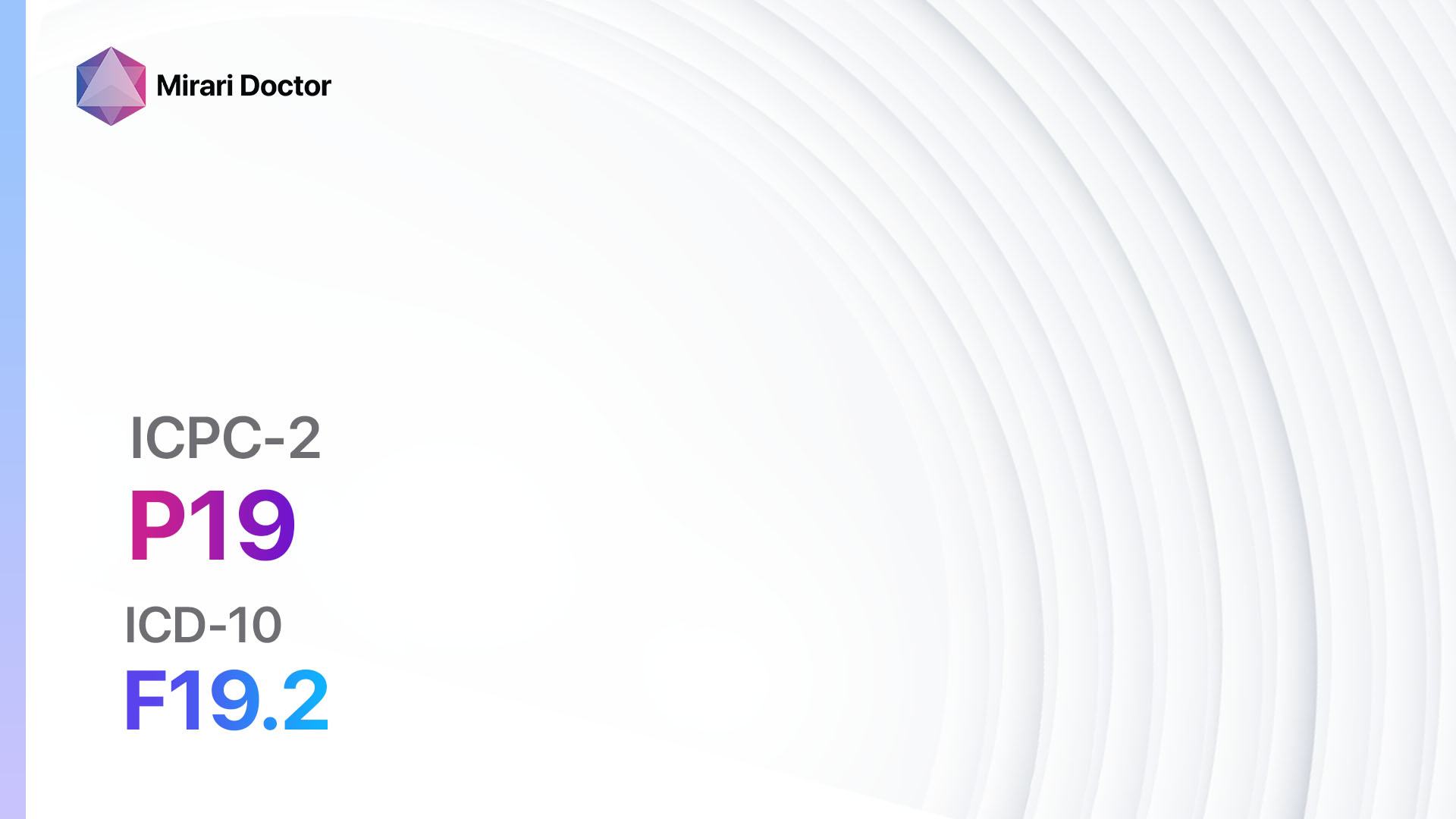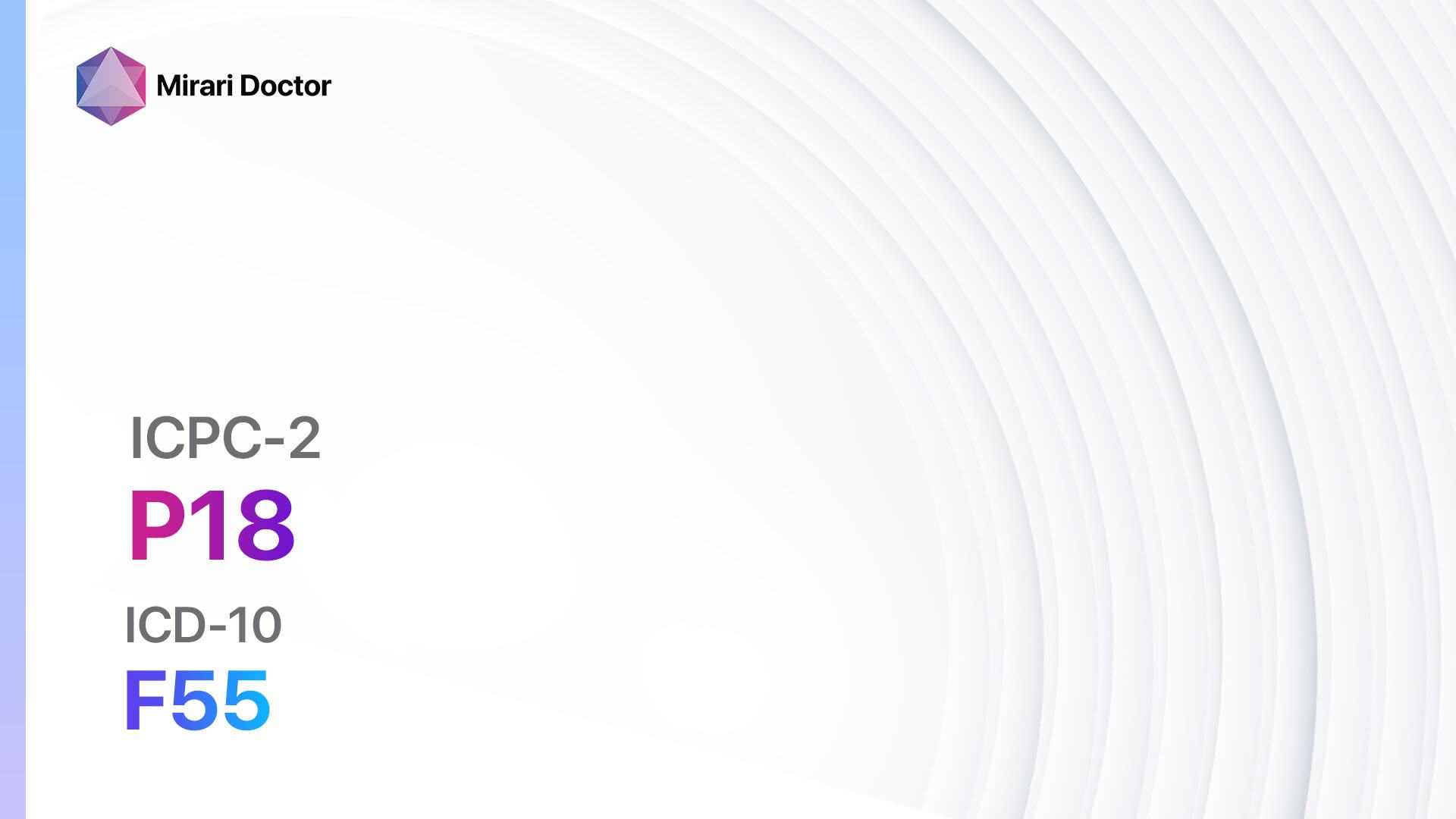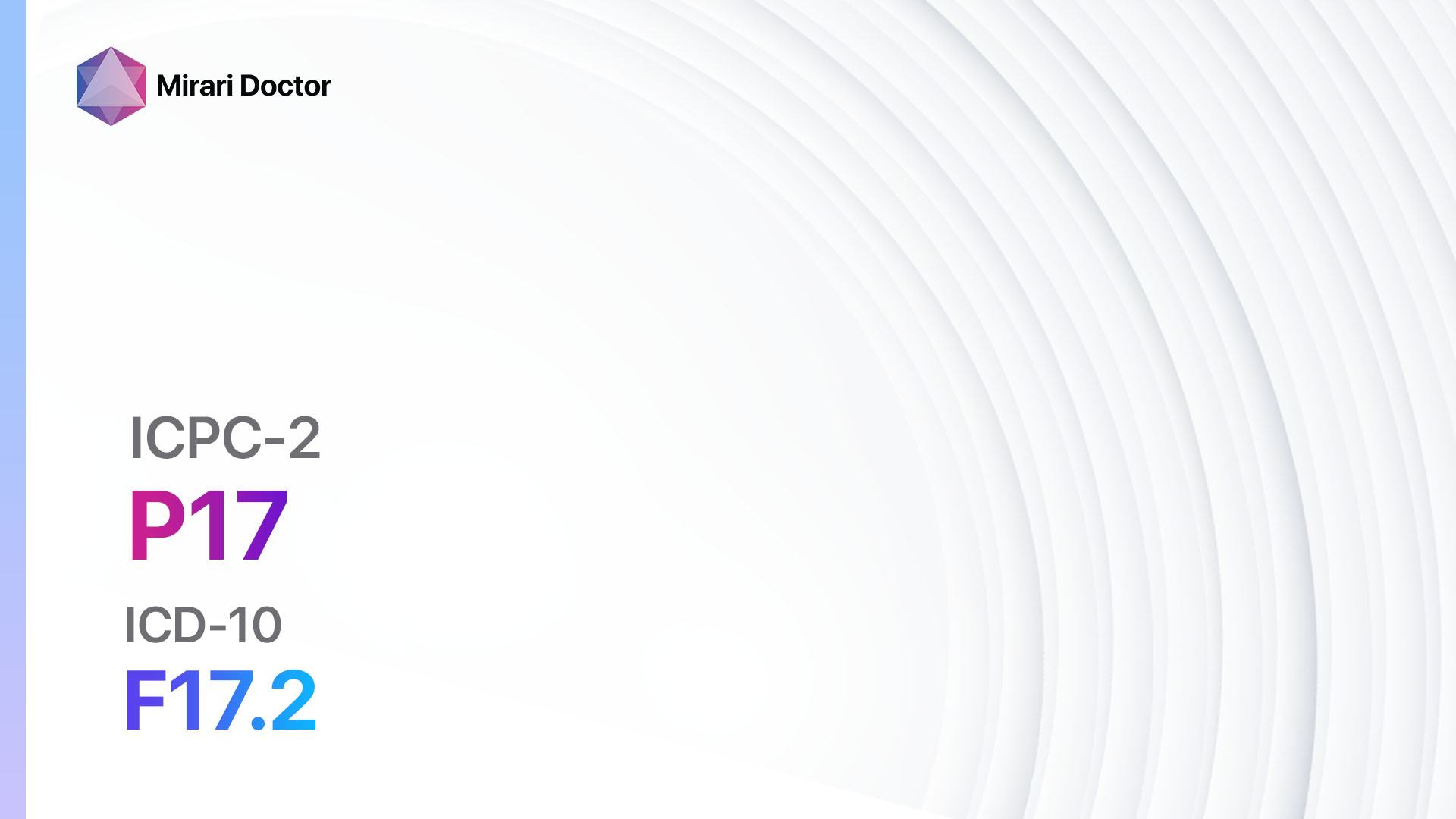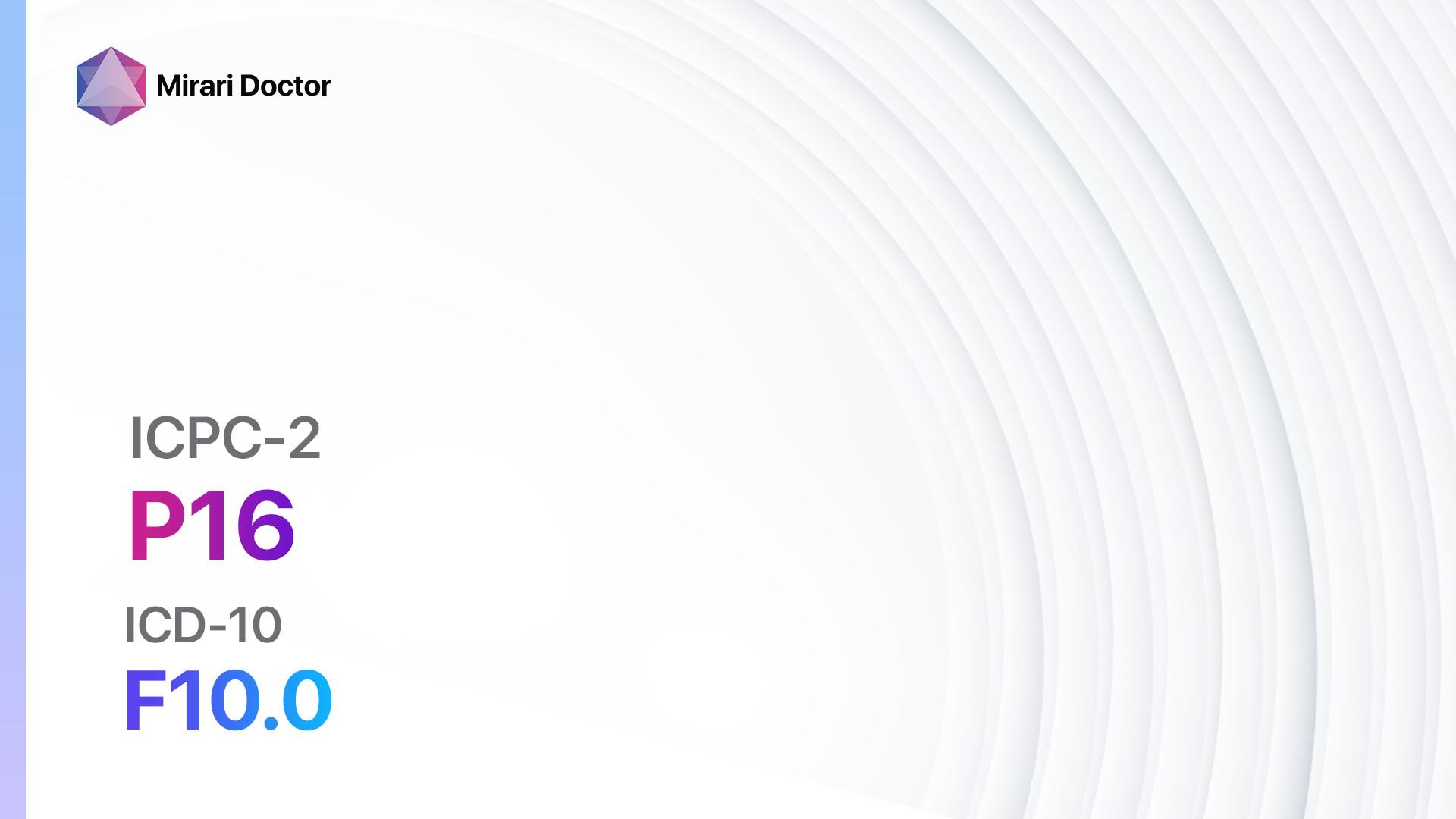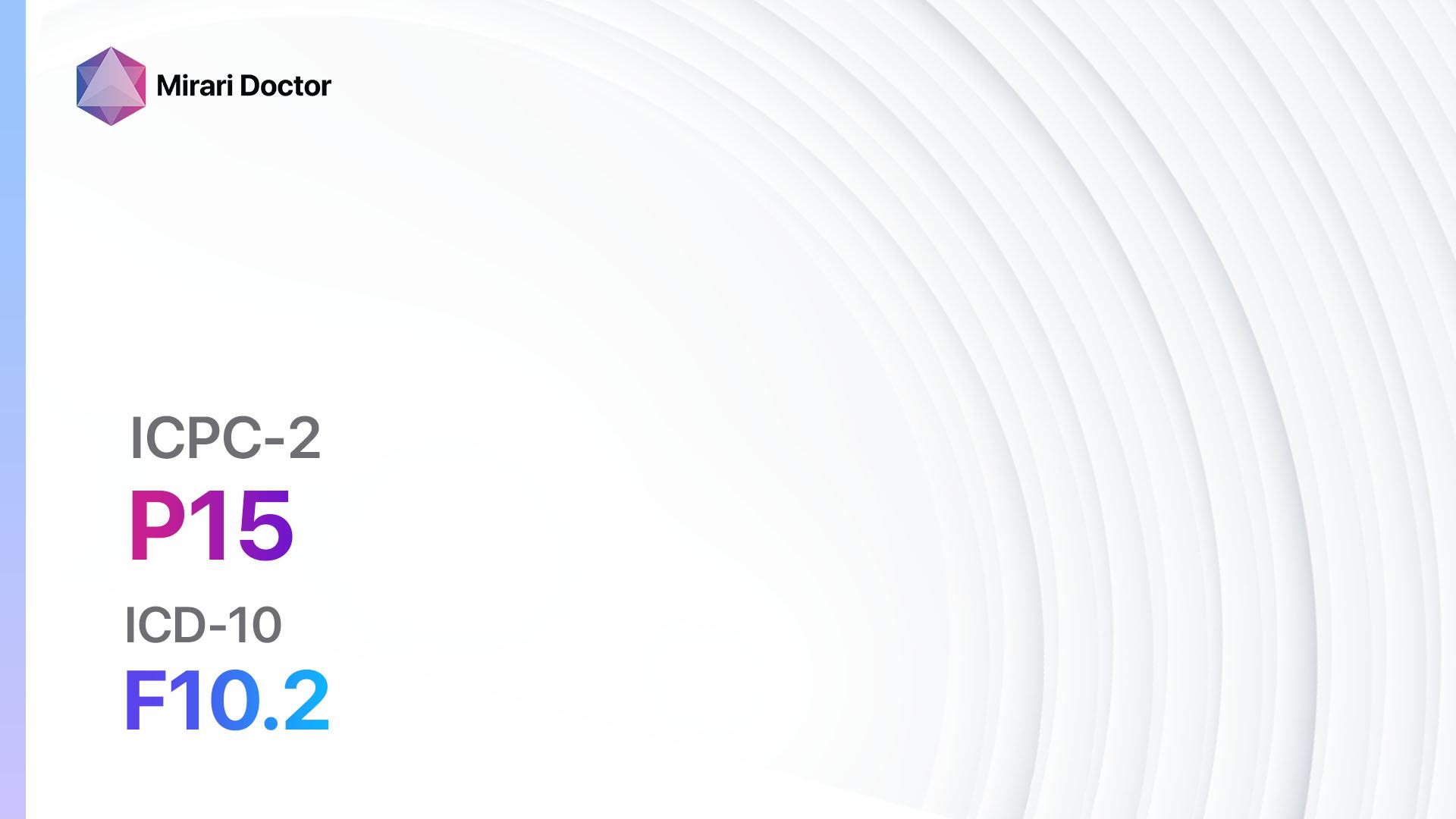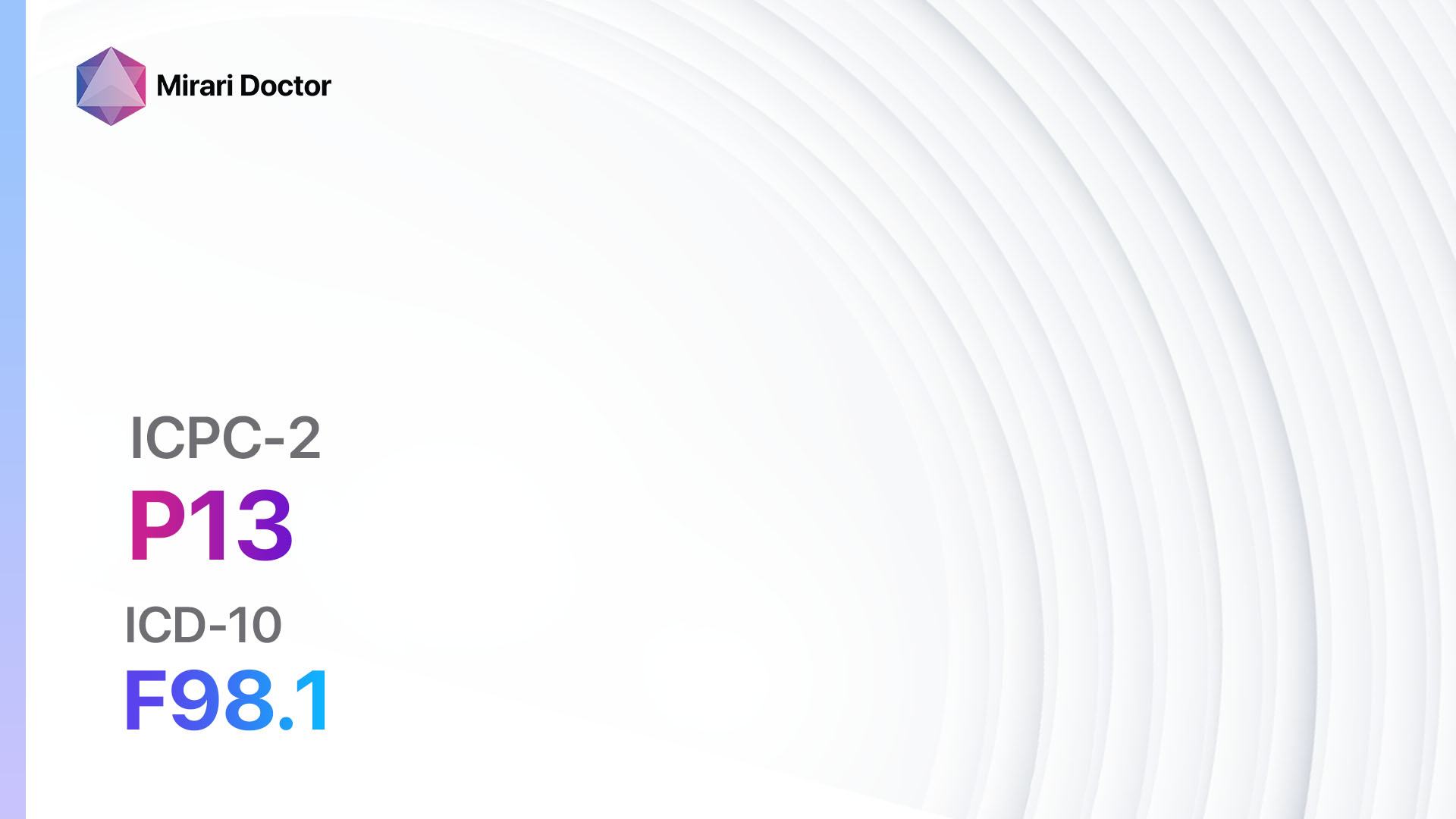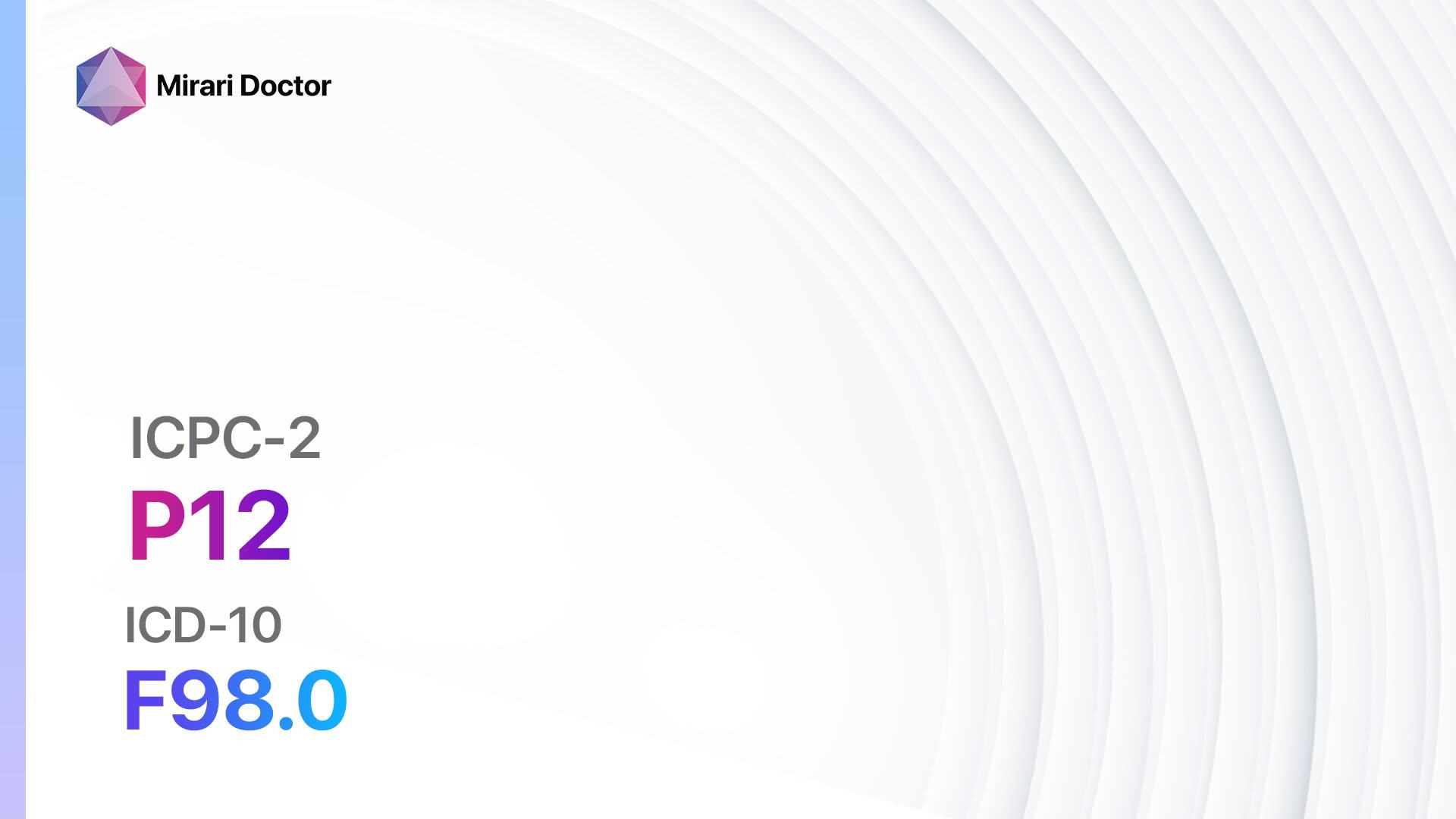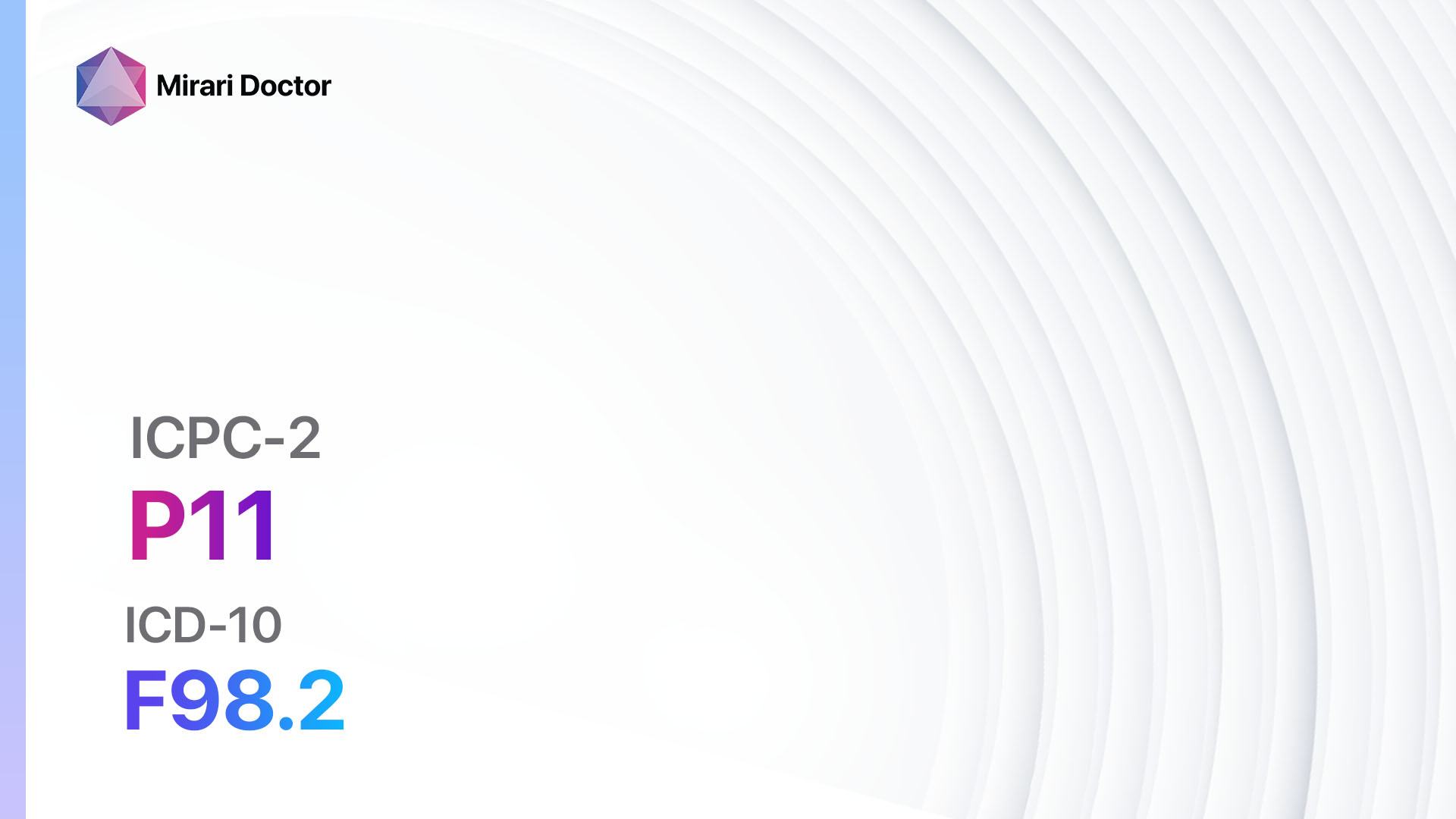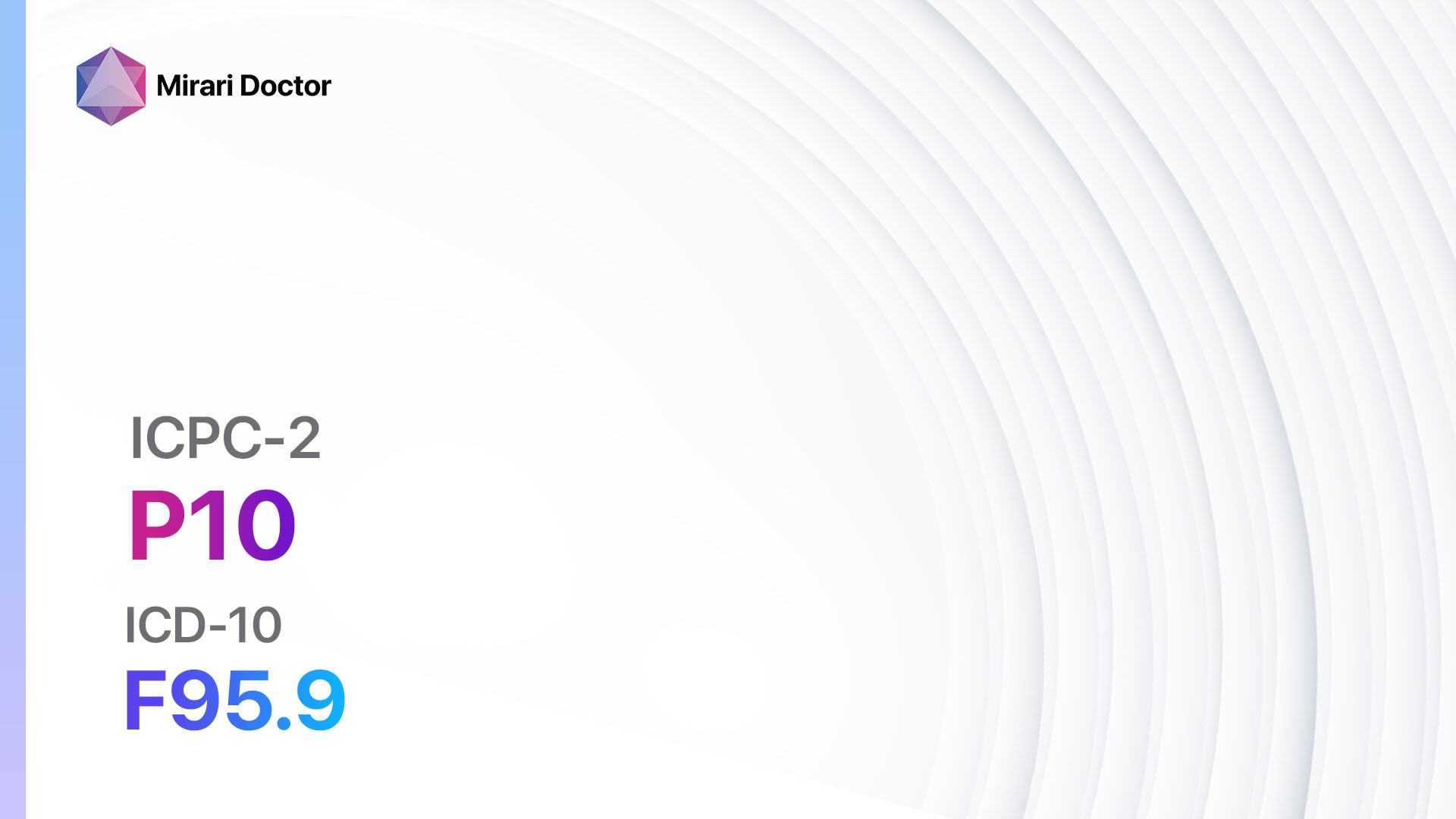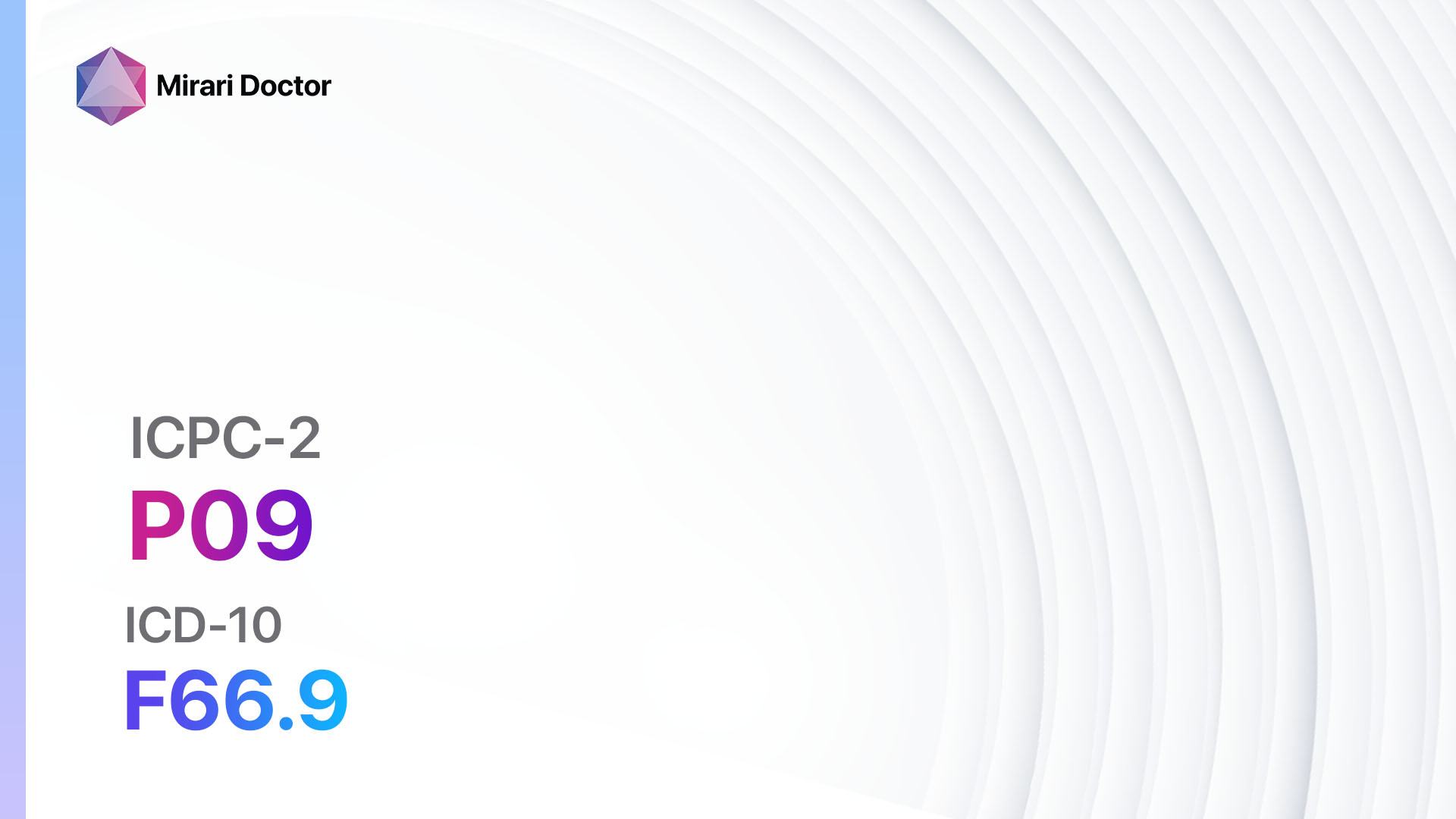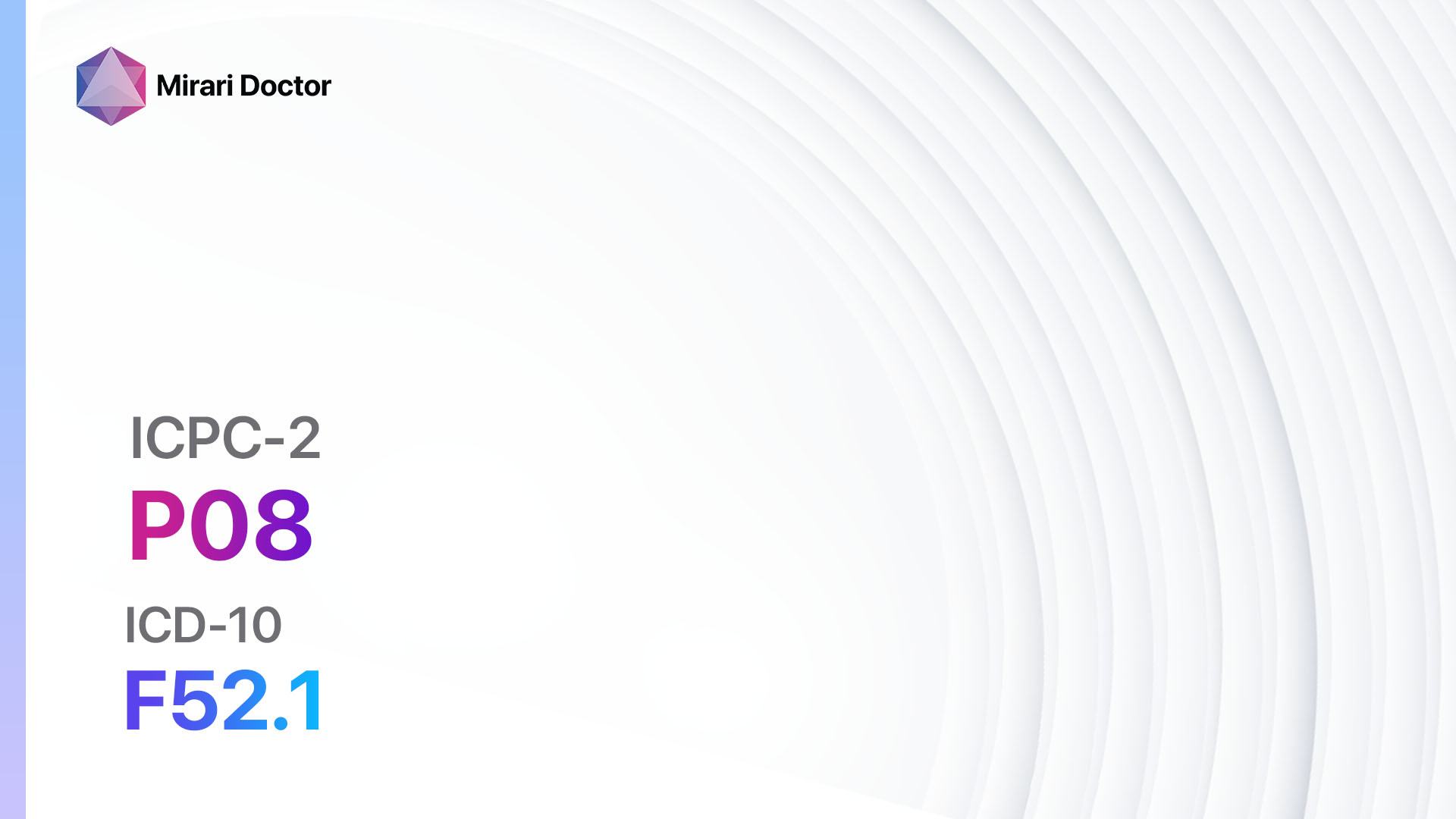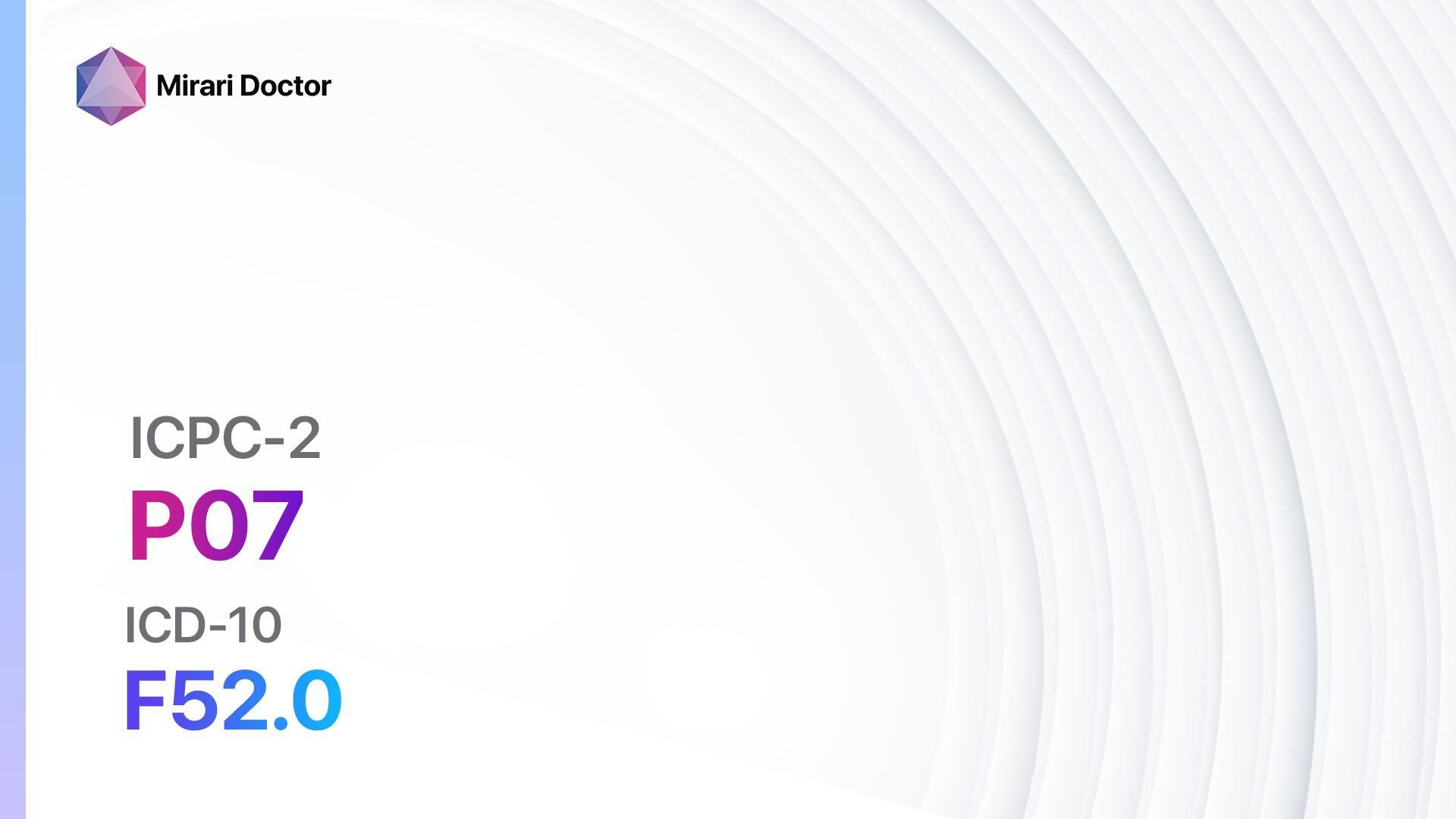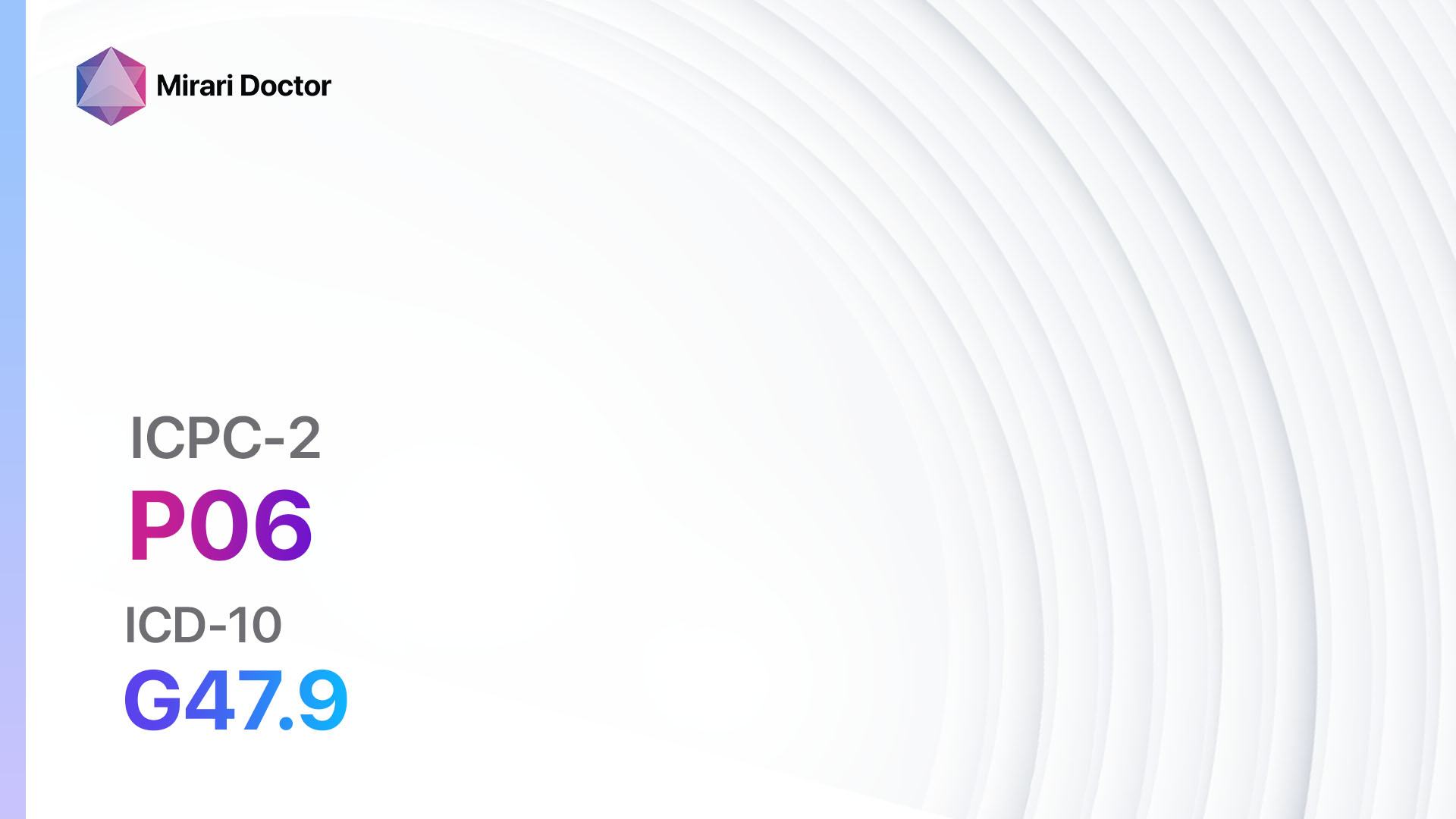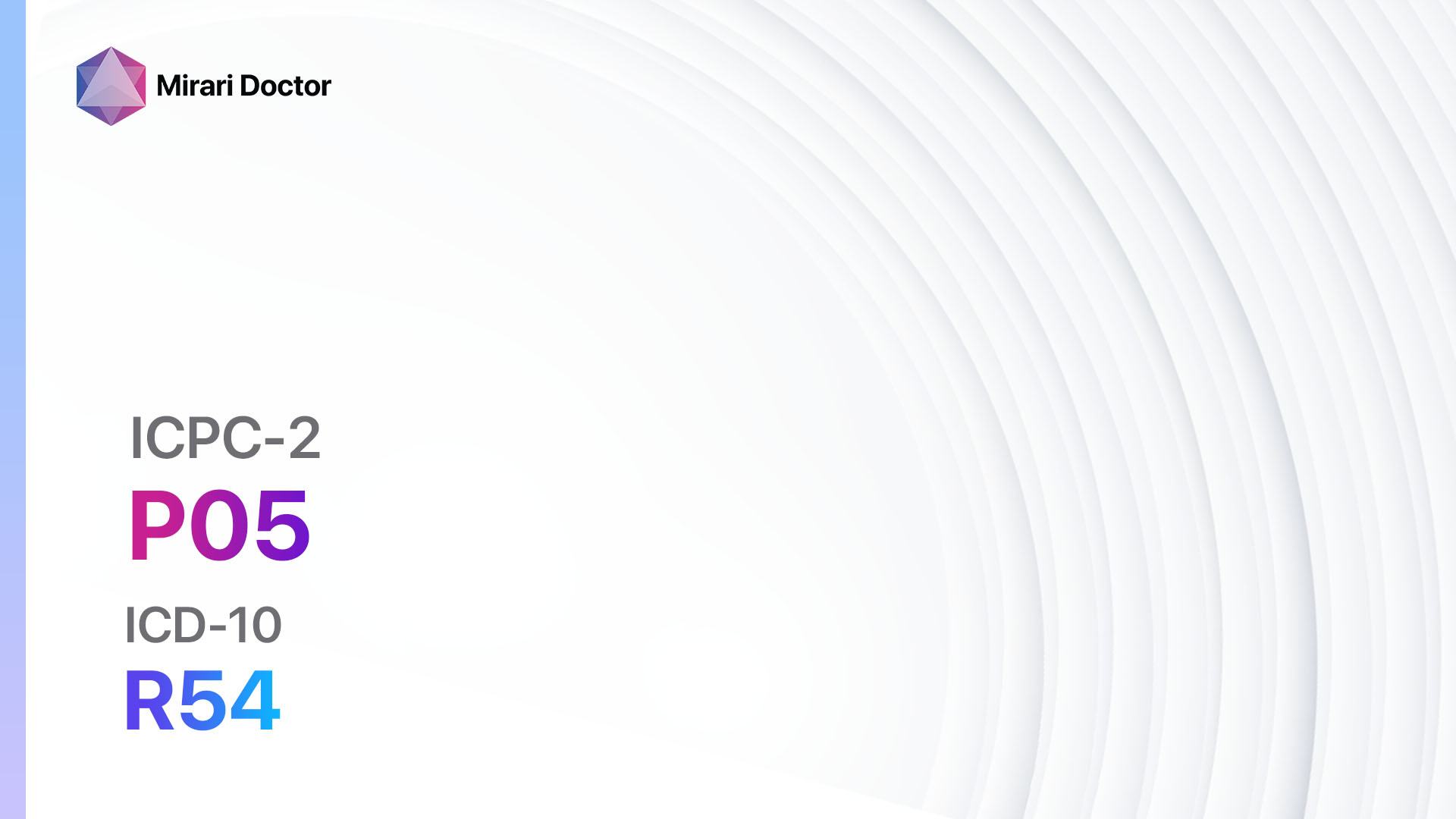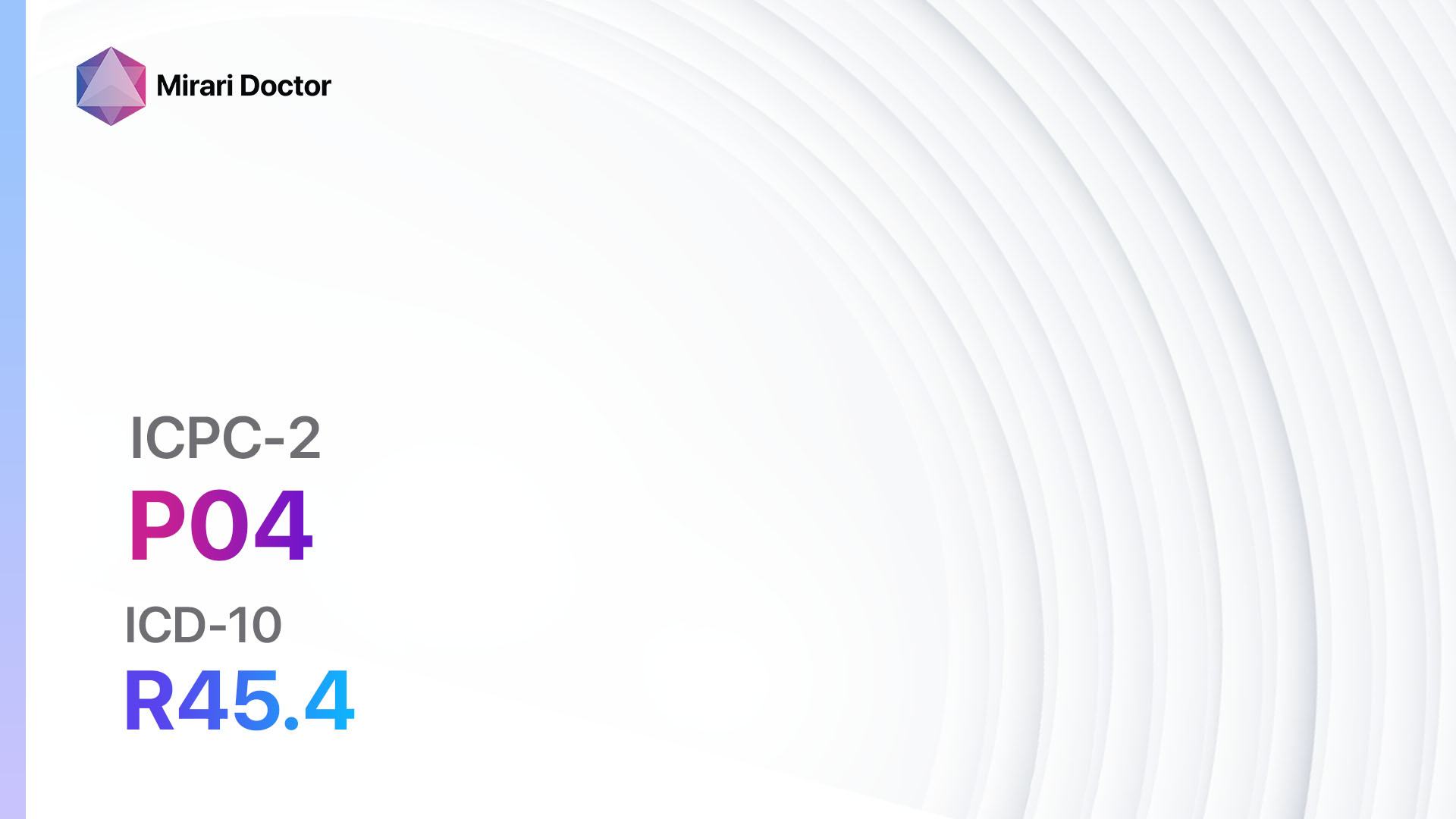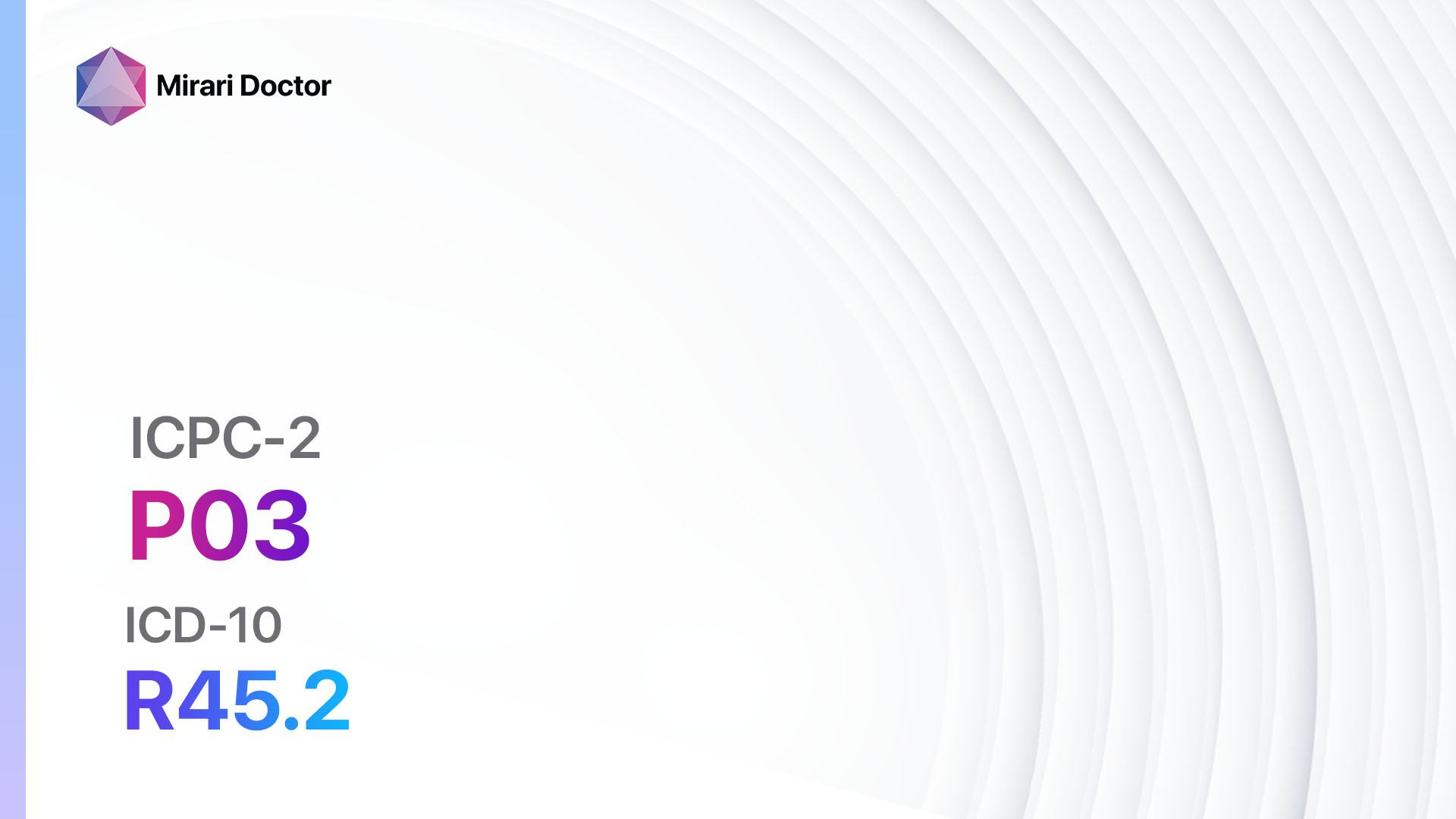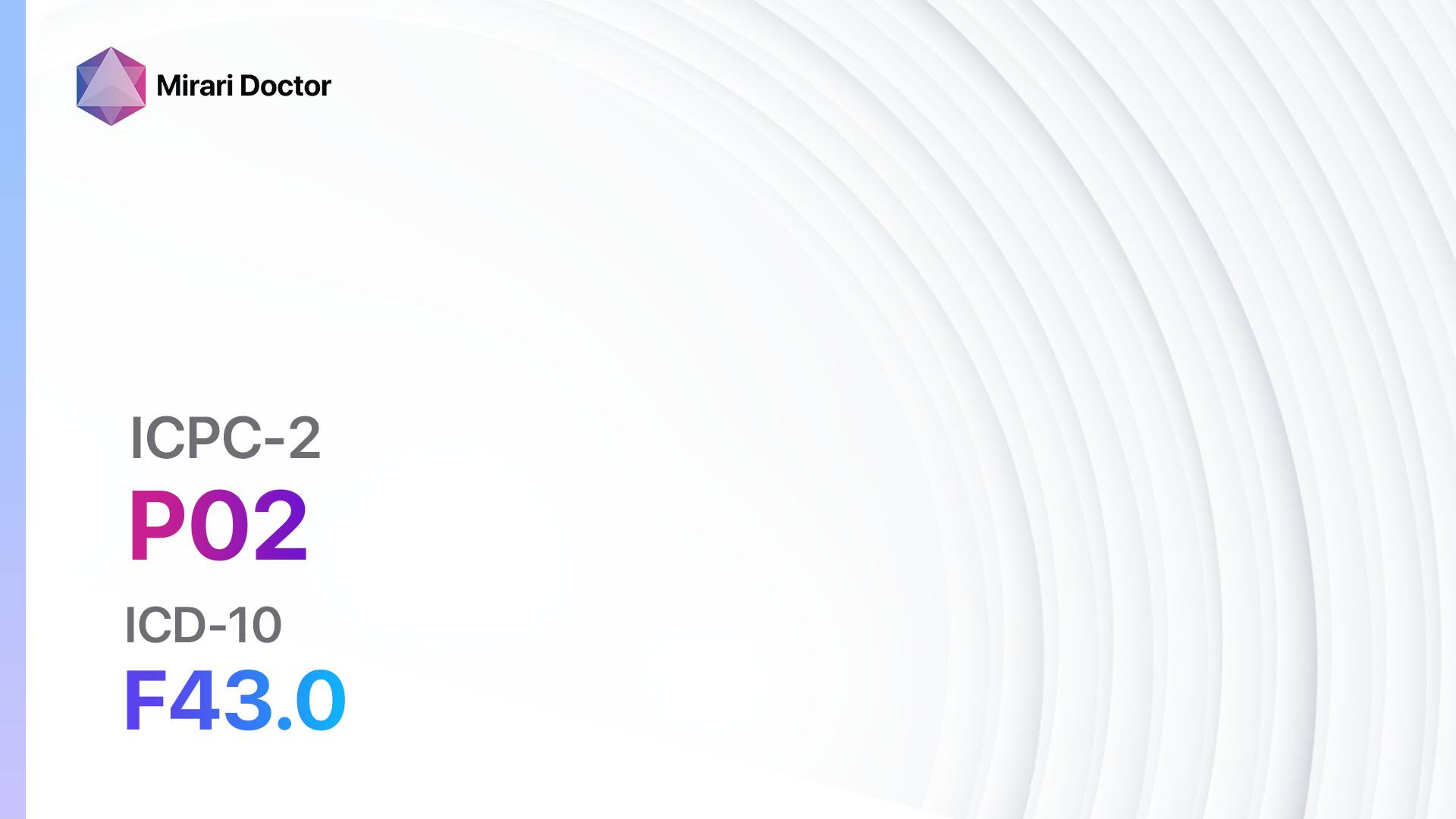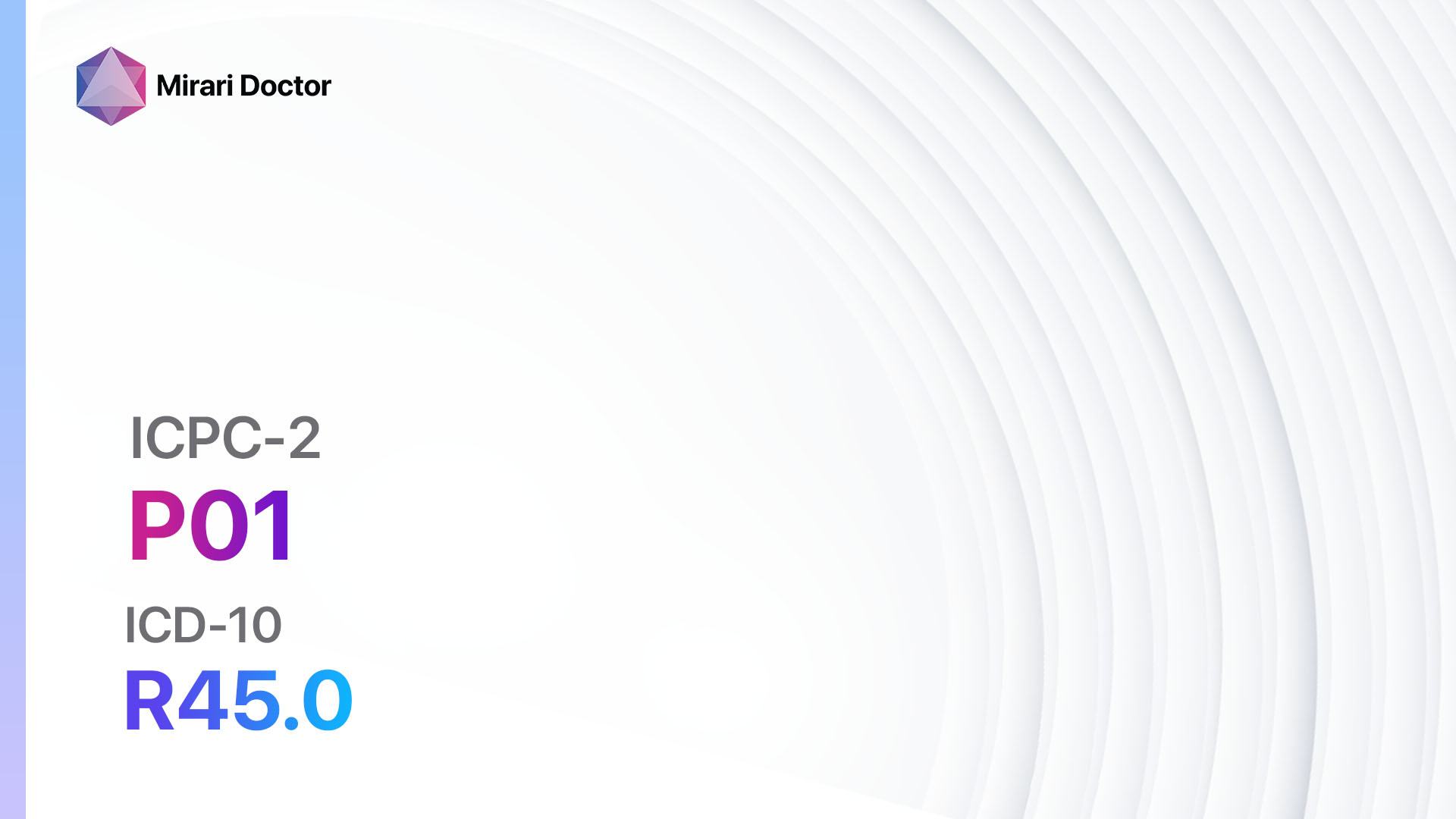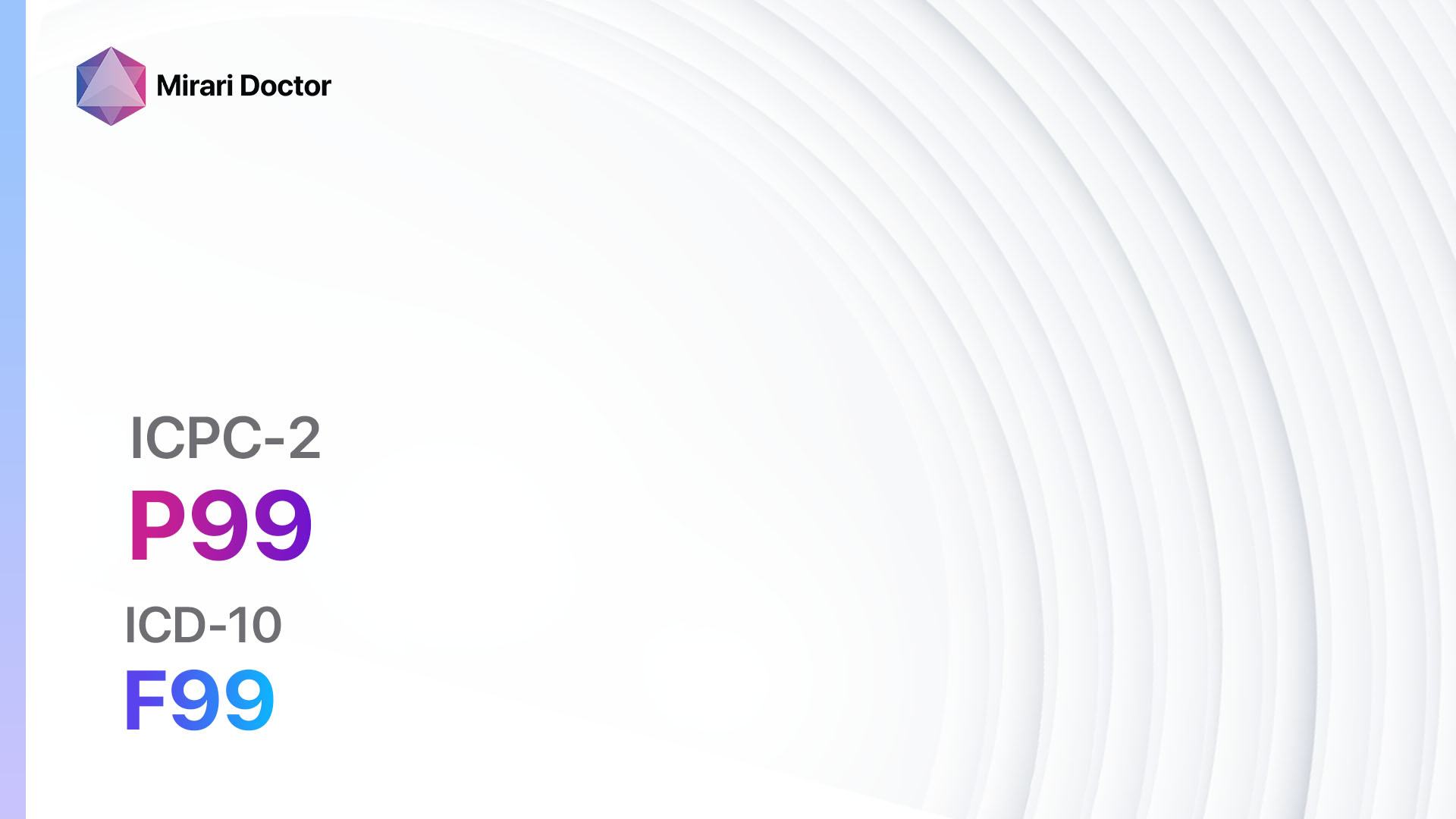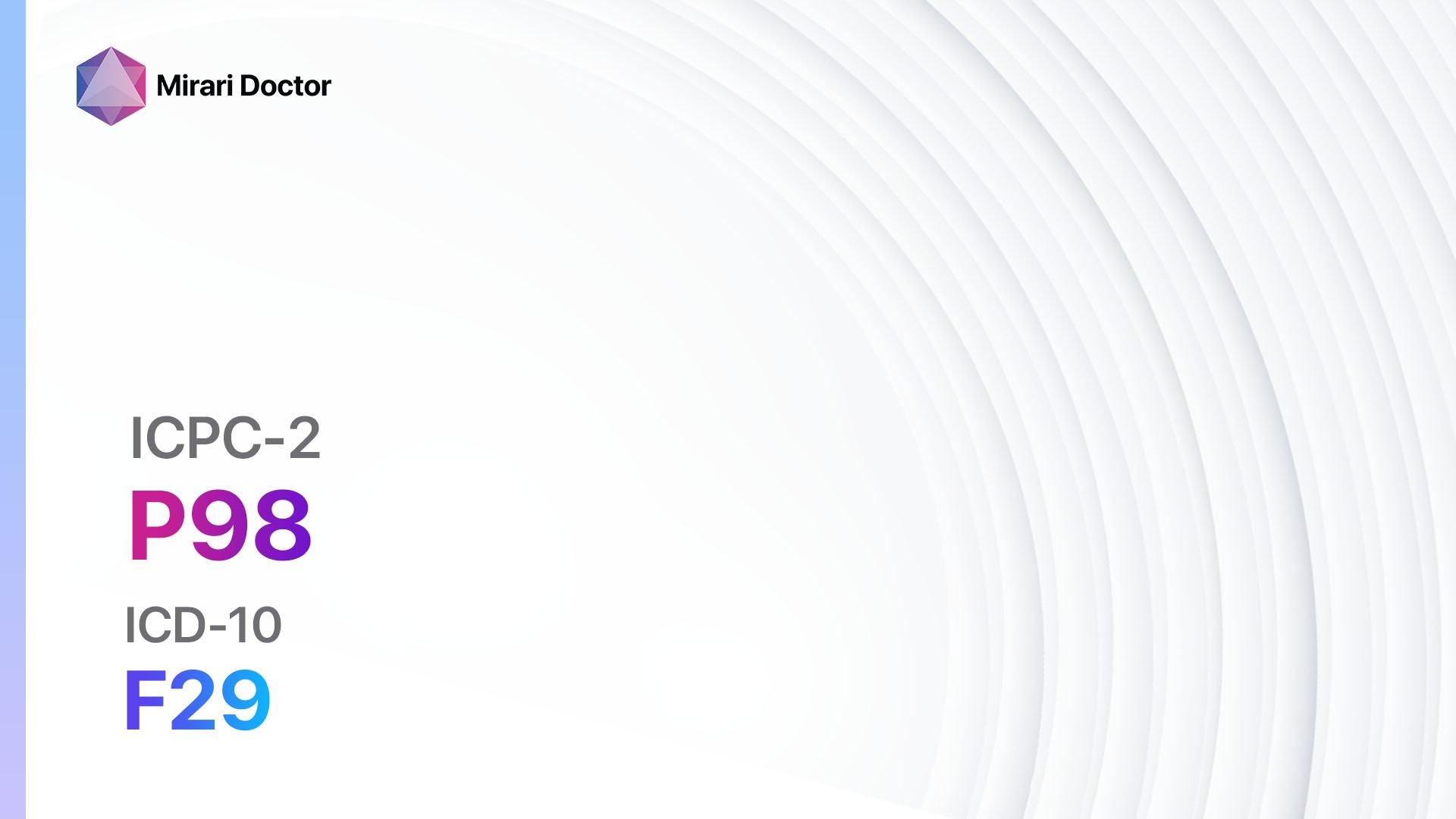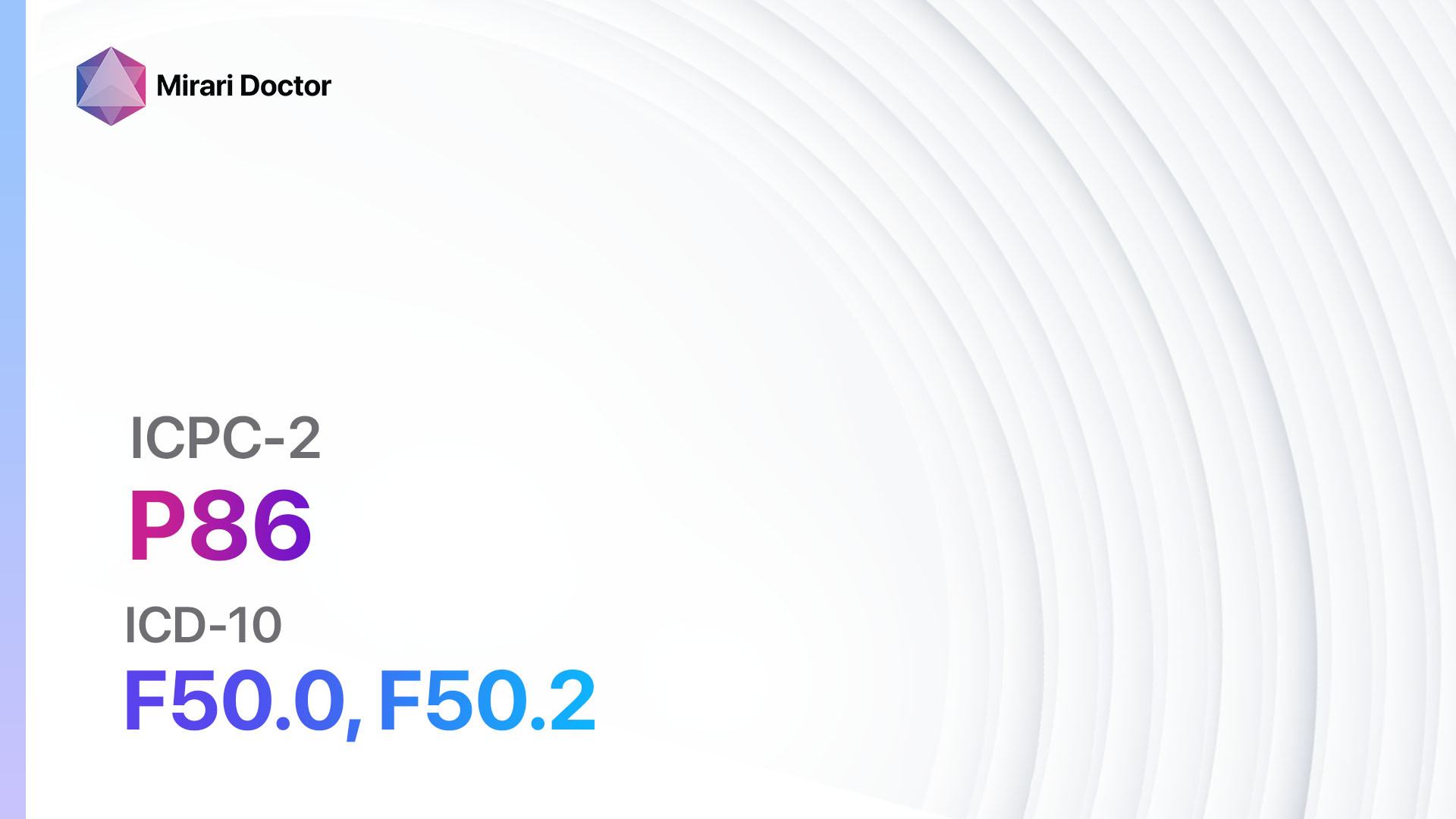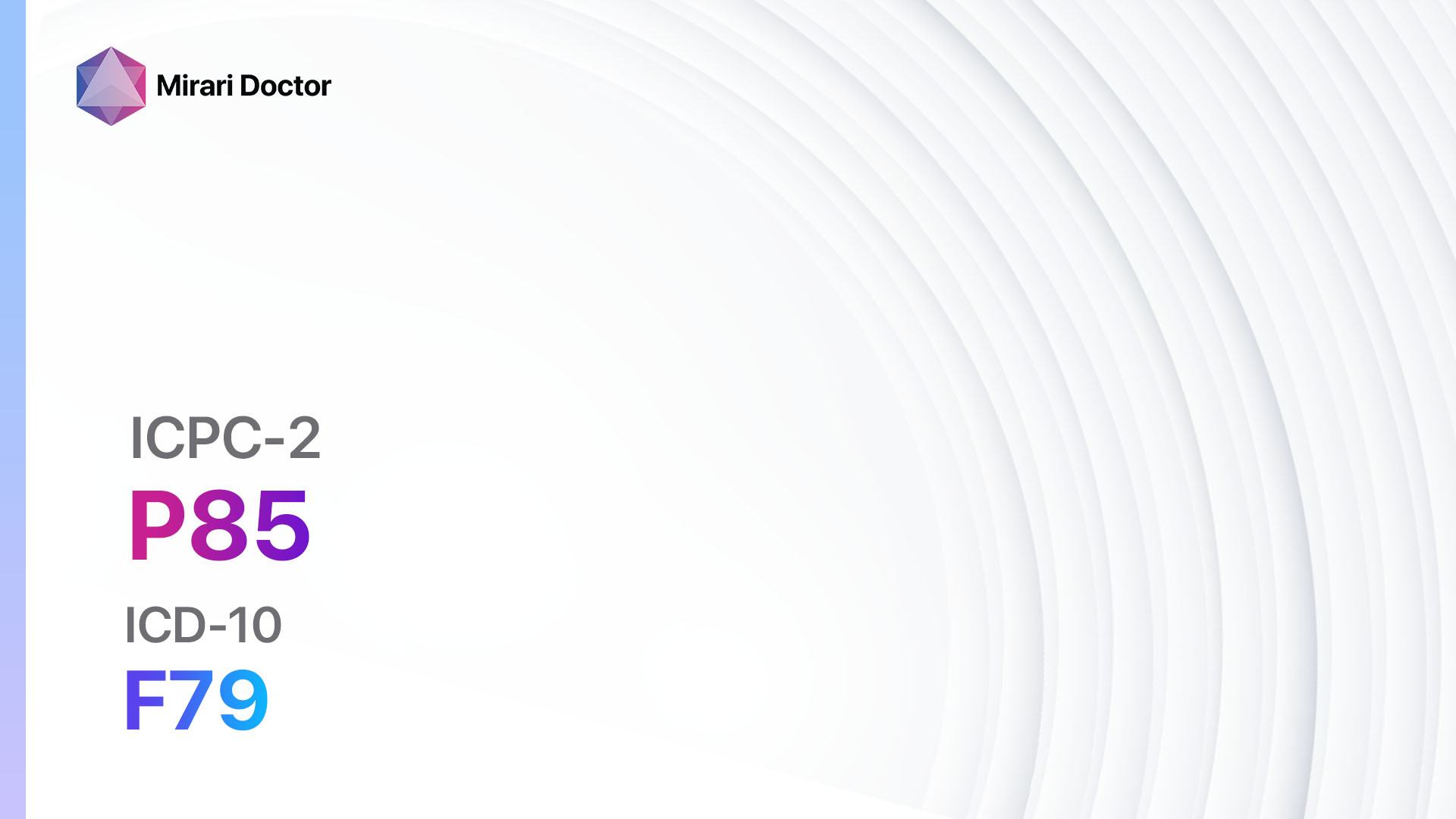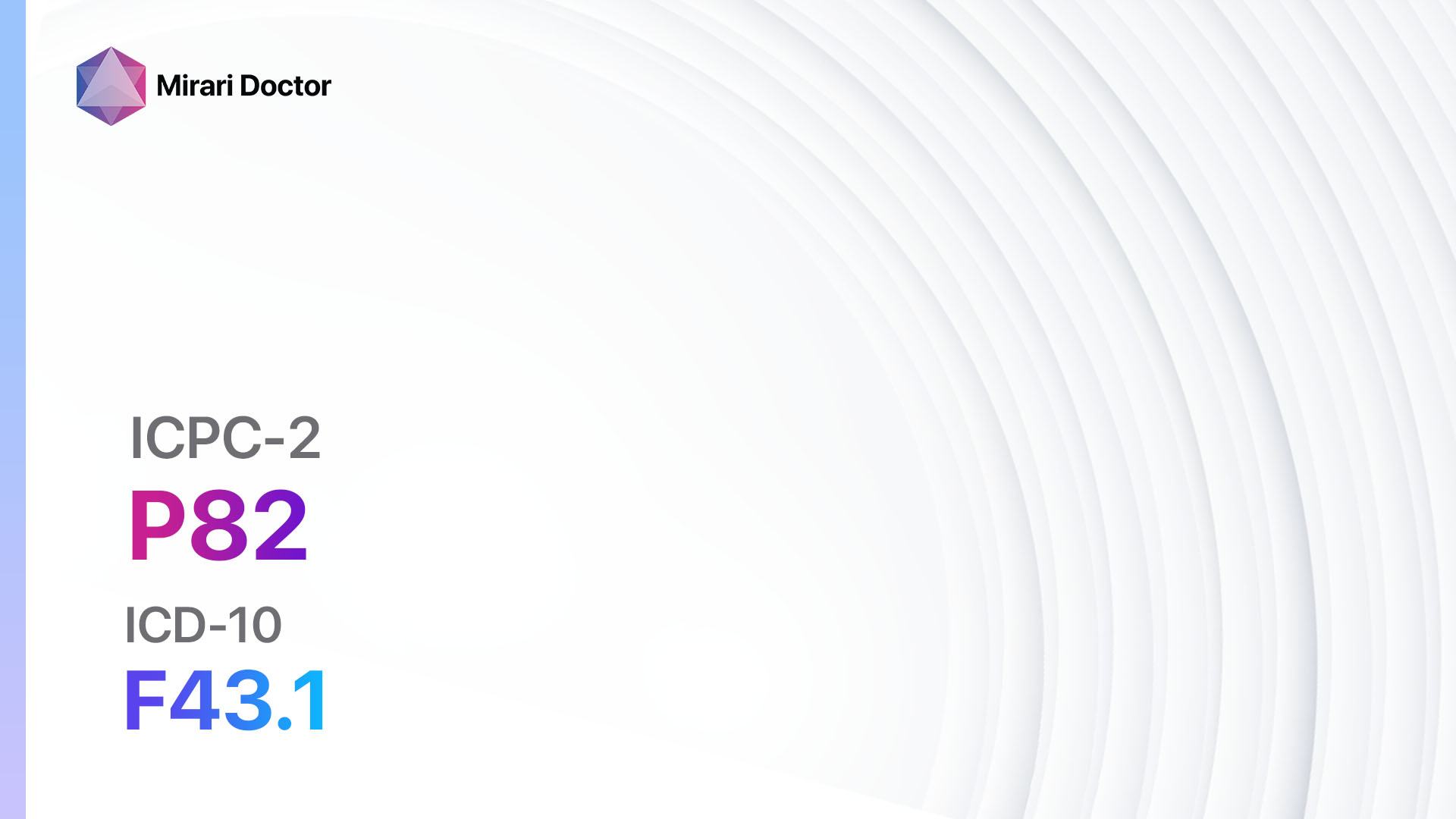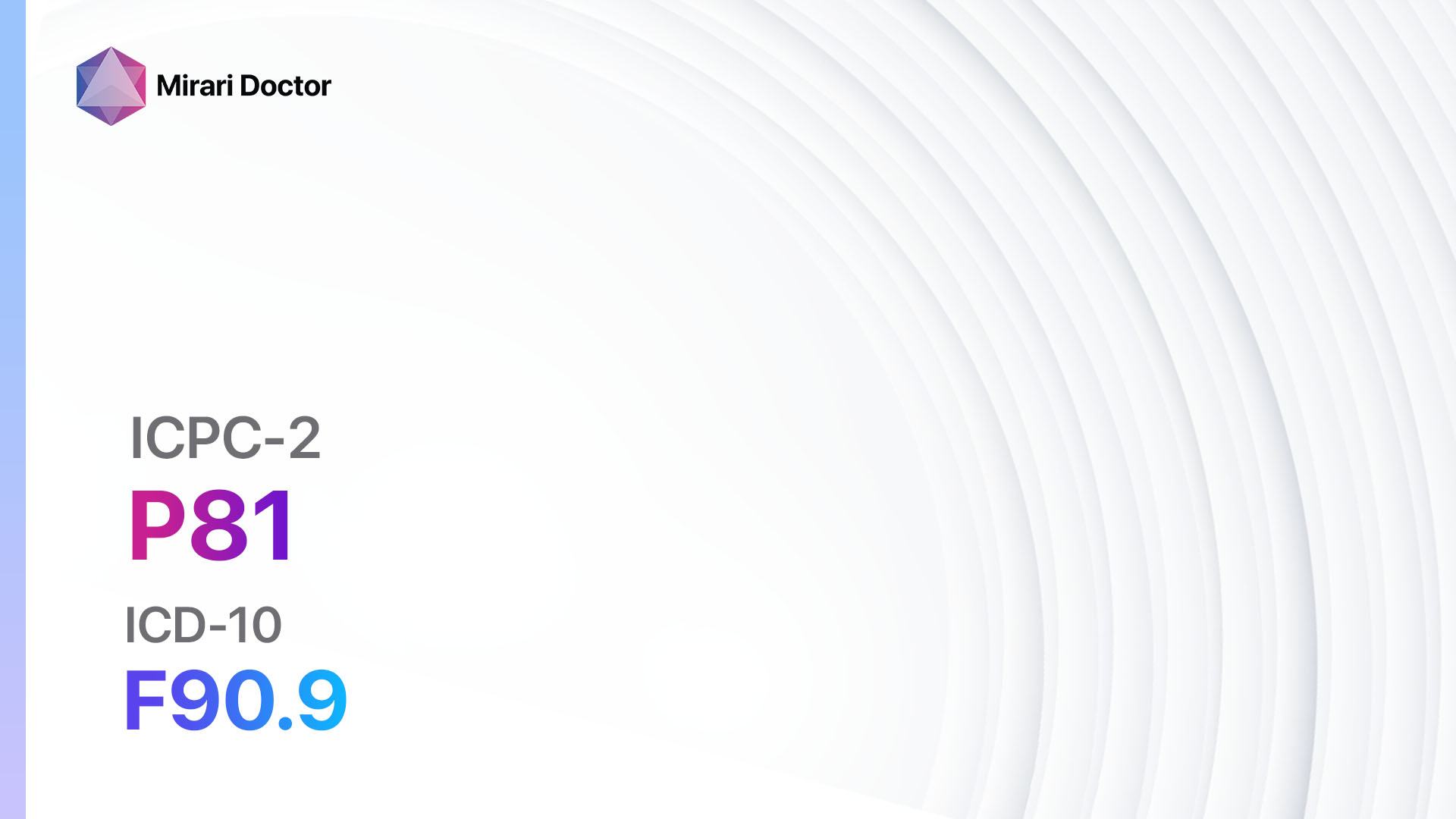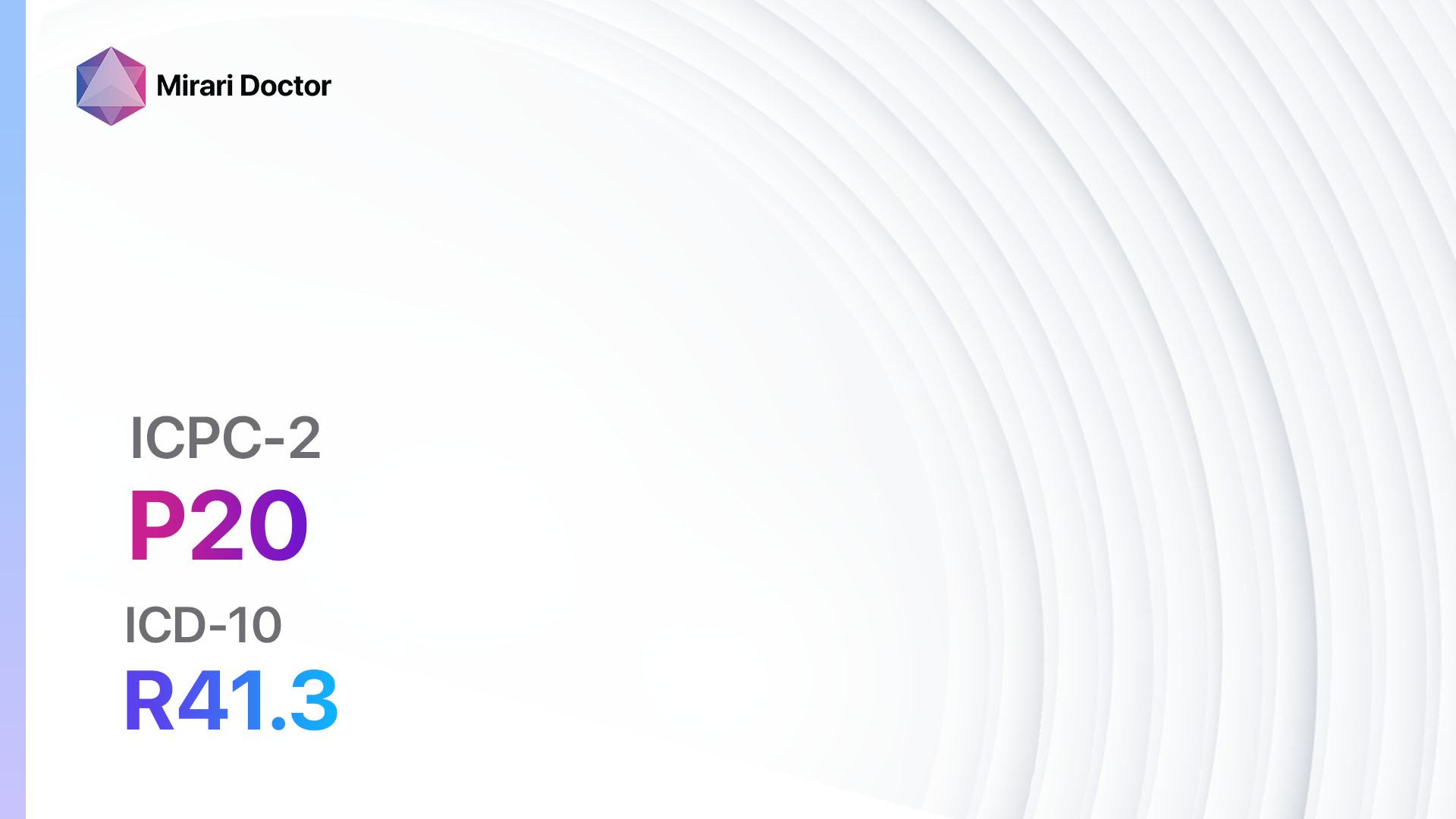
Introduction
Memory disturbance refers to a condition characterized by a decline in memory function, which can significantly impact daily activities and quality of life[1]. This guide aims to provide healthcare professionals with a comprehensive approach to diagnosing and managing memory disturbance in patients.
Codes
Symptoms
- Forgetfulness: Patients may experience difficulty remembering recent events, appointments, or important information.
- Confusion: Patients may become disoriented or have trouble following conversations or instructions.
- Difficulty learning new information: Patients may struggle to acquire new knowledge or skills.
- Language problems: Patients may have trouble finding the right words or understanding written or spoken language.
- Impaired judgment: Patients may exhibit poor decision-making or problem-solving abilities.
- Mood and personality changes: Patients may experience mood swings, irritability, or changes in personality[3].
Causes
- Alzheimer’s disease: The most common cause of memory disturbance, characterized by the accumulation of amyloid plaques and neurofibrillary tangles in the brain.
- Vascular dementia: Caused by reduced blood flow to the brain, often due to stroke or small vessel disease.
- Mild cognitive impairment: A transitional stage between normal aging and dementia, where memory impairment is present but does not significantly affect daily functioning.
- Medication side effects: Certain medications, such as sedatives, anticholinergics, and antiepileptic drugs, can cause memory disturbance.
- Depression and anxiety: Mental health conditions can contribute to memory problems.
- Other medical conditions: Memory disturbance can be a symptom of thyroid disorders, vitamin deficiencies, or infections[4].
Diagnostic Steps
Medical History
- Gather information about the patient’s memory complaints, including the onset, duration, and progression of symptoms.
- Assess for risk factors, such as family history of dementia, cardiovascular disease, or head trauma.
- Inquire about the presence of other medical conditions or medications that may contribute to memory disturbance.
- Evaluate the impact of memory problems on daily activities and quality of life[5].
Physical Examination
- Perform a thorough physical examination, including a neurological assessment, to identify any signs of underlying medical conditions or neurological abnormalities.
- Assess vital signs, including blood pressure, heart rate, and temperature.
- Evaluate the patient’s general appearance, gait, and coordination.
- Check for signs of sensory deficits or motor abnormalities[6].
Laboratory Tests
- Complete blood count (CBC): To assess for anemia or infection.
- Comprehensive metabolic panel (CMP): To evaluate kidney and liver function, electrolyte levels, and blood glucose.
- Thyroid function tests: To rule out thyroid disorders.
- Vitamin B12 and folate levels: To assess for deficiencies that can contribute to memory problems.
- Infectious disease screening: Depending on the patient’s history and risk factors, tests for infections such as HIV or syphilis may be warranted[7].
Diagnostic Imaging
- Magnetic resonance imaging (MRI): Provides detailed images of the brain to detect structural abnormalities or signs of neurodegenerative diseases.
- Positron emission tomography (PET) scan: Can help differentiate between different types of dementia by measuring brain metabolism and amyloid deposition.
- Single-photon emission computed tomography (SPECT) scan: Useful in evaluating blood flow and brain function.
- Computed tomography (CT) scan: May be performed to rule out other causes of memory disturbance, such as tumors or stroke[8].
Other Tests
- Neuropsychological testing: Assess cognitive function, memory, attention, and problem-solving abilities.
- Electroencephalogram (EEG): Measures electrical activity in the brain and can help diagnose conditions such as epilepsy.
- Genetic testing: In certain cases, genetic testing may be recommended to identify specific gene mutations associated with familial forms of dementia[9].
Follow-up and Patient Education
- Schedule regular follow-up appointments to monitor the progression of memory disturbance and adjust treatment as needed.
- Provide education to patients and their caregivers about the nature of memory disturbance, available treatment options, and strategies for managing symptoms.
- Encourage patients to engage in cognitive stimulation activities, maintain a healthy lifestyle, and seek support from support groups or counseling services[10].
Possible Interventions
Traditional Interventions
Medications:
Top 5 drugs for memory disturbance:
- Cholinesterase inhibitors (e.g., Donepezil, Rivastigmine, Galantamine):
- Cost: Donepezil – $10-$50/month, Rivastigmine – $10-$100/month, Galantamine – $50-$200/month.
- Contraindications: Hypersensitivity to the drug.
- Side effects: Nausea, vomiting, diarrhea, loss of appetite.
- Severe side effects: Bradycardia, syncope, seizures.
- Drug interactions: Anticholinergic drugs, nonsteroidal anti-inflammatory drugs (NSAIDs).
- Warning: Titrate dosage slowly to minimize side effects.
- Memantine:
- Cost: $50-$200/month.
- Contraindications: Hypersensitivity to the drug.
- Side effects: Dizziness, headache, constipation.
- Severe side effects: Hallucinations, seizures, Stevens-Johnson syndrome.
- Drug interactions: Sodium bicarbonate, carbonic anhydrase inhibitors.
- Warning: Dosage adjustment required in patients with renal impairment.
- Antidepressants (e.g., Sertraline, Escitalopram):
- Cost: $10-$50/month.
- Contraindications: Hypersensitivity to the drug.
- Side effects: Nausea, insomnia, sexual dysfunction.
- Severe side effects: Serotonin syndrome, suicidal thoughts.
- Drug interactions: Monoamine oxidase inhibitors (MAOIs), other serotonergic drugs.
- Warning: Monitor for worsening depression or suicidal ideation.
- Anxiolytics (e.g., Lorazepam, Alprazolam):
- Cost: $10-$50/month.
- Contraindications: Hypersensitivity to the drug, narrow-angle glaucoma.
- Side effects: Sedation, dizziness, confusion.
- Severe side effects: Respiratory depression, paradoxical reactions.
- Drug interactions: Other central nervous system depressants, opioids.
- Warning: Risk of dependence and withdrawal symptoms.
- Antipsychotics (e.g., Risperidone, Quetiapine):
- Cost: $10-$100/month.
- Contraindications: Hypersensitivity to the drug, dementia-related psychosis.
- Side effects: Sedation, weight gain, extrapyramidal symptoms.
- Severe side effects: Neuroleptic malignant syndrome, tardive dyskinesia.
- Drug interactions: Other antipsychotics, anticholinergic drugs.
- Warning: Increased risk of mortality in elderly patients with dementia-related psychosis.
Alternative Drugs:
- Ginkgo biloba: An herbal supplement that may improve cognitive function. Cost: $10-$30/month.
- Omega-3 fatty acids: Found in fish oil supplements, these may have neuroprotective effects. Cost: $10-$30/month.
- Vitamin E: Some studies suggest that vitamin E may slow the progression of Alzheimer’s disease. Cost: $10-$20/month.
- Huperzine A: An herbal supplement that may enhance memory and cognitive function. Cost: $10-$30/month.
- Curcumin: Derived from turmeric, curcumin has antioxidant and anti-inflammatory properties. Cost: $10-$30/month.
Cognitive Rehabilitation:
- Cognitive training: Engaging in activities that challenge memory and cognitive function, such as puzzles or memory exercises.
- Memory aids: Using tools like calendars, reminder apps, or sticky notes to assist with memory tasks.
- Environmental modifications: Simplifying the environment to reduce distractions and improve focus.
- Behavior management: Implementing strategies to address behavioral symptoms associated with memory disturbance, such as agitation or aggression.
Lifestyle Interventions
- Regular exercise: Engaging in physical activity can improve blood flow to the brain and promote cognitive function. Cost: Varies (e.g., gym membership, exercise equipment).
- Healthy diet: Consuming a balanced diet rich in fruits, vegetables, whole grains, and lean proteins can support brain health. Cost: Varies depending on food choices.
- Mental stimulation: Engaging in activities that challenge the brain, such as reading, puzzles, or learning a new skill. Cost: Varies (e.g., books, puzzle books).
- Adequate sleep: Ensuring sufficient sleep duration and quality to support cognitive function. Cost: Varies (e.g., comfortable bedding, sleep aids).
- Stress management: Employing stress reduction techniques, such as meditation, deep breathing exercises, or therapy. Cost: Varies (e.g., meditation apps, therapy sessions).
Assistive Devices
- Memory aids: Using devices such as electronic organizers, voice recorders, or smartphone apps to assist with memory tasks.
- Reminder systems: Setting up alarms, timers, or visual cues to prompt memory recall.
- GPS navigation systems: Assisting with wayfinding and navigation in unfamiliar environments.
- Medication management systems: Automated pill dispensers or reminder apps to ensure medication adherence.
It is important to note that the cost ranges provided are approximate and may vary depending on the location and availability of the interventions.
Mirari Cold Plasma Alternative Intervention
Understanding Mirari Cold Plasma
- Safe and Non-Invasive Treatment: Mirari Cold Plasma is a safe and non-invasive treatment option for various skin conditions. It does not require incisions, minimizing the risk of scarring, bleeding, or tissue damage.
- Efficient Extraction of Foreign Bodies: Mirari Cold Plasma facilitates the removal of foreign bodies from the skin by degrading and dissociating organic matter, allowing easier access and extraction.
- Pain Reduction and Comfort: Mirari Cold Plasma has a local analgesic effect, providing pain relief during the treatment, making it more comfortable for the patient.
- Reduced Risk of Infection: Mirari Cold Plasma has antimicrobial properties, effectively killing bacteria and reducing the risk of infection.
- Accelerated Healing and Minimal Scarring: Mirari Cold Plasma stimulates wound healing and tissue regeneration, reducing healing time and minimizing the formation of scars.
Mirari Cold Plasma Prescription
Video instructions for using Mirari Cold Plasma Device – P20 Memory disturbance (ICD-10:R41.3)
| Mild | Moderate | Severe |
| Mode setting: 8 (Insomnia) Location: 7 (Neuro system & ENT) Morning: 15 minutes, Evening: 15 minutes |
Mode setting: 8 (Insomnia) Location: 7 (Neuro system & ENT) Morning: 30 minutes, Lunch: 30 minutes, Evening: 30 minutes |
Mode setting: 8 (Insomnia) Location: 7 (Neuro system & ENT) Morning: 30 minutes, Lunch: 30 minutes, Evening: 30 minutes |
| Mode setting: 2 (Wound Healing) Location: 7 (Neuro system & ENT) Morning: 15 minutes, Evening: 15 minutes |
Mode setting: 2 (Wound Healing) Location: 7 (Neuro system & ENT) Morning: 30 minutes, Lunch: 30 minutes, Evening: 30 minutes |
Mode setting: 2 (Wound Healing) Location: 7 (Neuro system & ENT) Morning: 30 minutes, Lunch: 30 minutes, Evening: 30 minutes |
| Mode setting: 7 (Immunotherapy) Location: 1 (Sacrum) Morning: 15 minutes, Evening: 15 minutes |
Mode setting: 7 (Immunotherapy) Location: 1 (Sacrum) Morning: 30 minutes, Lunch: 30 minutes, Evening: 30 minutes |
Mode setting: 7 (Immunotherapy) Location: 1 (Sacrum) Morning: 30 minutes, Lunch: 30 minutes, Evening: 30 minutes |
| Total Morning: 45 minutes approx. $7.50 USD, Evening: 45 minutes approx. $7.50 USD |
Total Morning: 90 minutes approx. $15 USD, Lunch: 90 minutes approx. $15 USD, Evening: 90 minutes approx. $15 USD |
Total Morning: 90 minutes approx. $15 USD, Lunch: 90 minutes approx. $15 USD, Evening: 90 minutes approx. $15 USD |
| Usual treatment for 7-60 days approx. $105 USD – $900 USD | Usual treatment for 6-8 weeks approx. $1,890 USD – $2,520 USD |
Usual treatment for 3-6 months approx. $4,050 USD – $8,100 USD
|
 |
|
Use the Mirari Cold Plasma device to treat Memory disturbance effectively.
WARNING: MIRARI COLD PLASMA IS DESIGNED FOR THE HUMAN BODY WITHOUT ANY ARTIFICIAL OR THIRD PARTY PRODUCTS. USE OF OTHER PRODUCTS IN COMBINATION WITH MIRARI COLD PLASMA MAY CAUSE UNPREDICTABLE EFFECTS, HARM OR INJURY. PLEASE CONSULT A MEDICAL PROFESSIONAL BEFORE COMBINING ANY OTHER PRODUCTS WITH USE OF MIRARI.
Step 1: Cleanse the Skin
- Start by cleaning the affected area of the skin with a gentle cleanser or mild soap and water. Gently pat the area dry with a clean towel.
Step 2: Prepare the Mirari Cold Plasma device
- Ensure that the Mirari Cold Plasma device is fully charged or has fresh batteries as per the manufacturer’s instructions. Make sure the device is clean and in good working condition.
- Switch on the Mirari device using the power button or by following the specific instructions provided with the device.
- Some Mirari devices may have adjustable settings for intensity or treatment duration. Follow the manufacturer’s instructions to select the appropriate settings based on your needs and the recommended guidelines.
Step 3: Apply the Device
- Place the Mirari device in direct contact with the affected area of the skin. Gently glide or hold the device over the skin surface, ensuring even coverage of the area experiencing.
- Slowly move the Mirari device in a circular motion or follow a specific pattern as indicated in the user manual. This helps ensure thorough treatment coverage.
Step 4: Monitor and Assess:
- Keep track of your progress and evaluate the effectiveness of the Mirari device in managing your Memory disturbance. If you have any concerns or notice any adverse reactions, consult with your health care professional.
Note
This guide is for informational purposes only and should not replace the advice of a medical professional. Always consult with your healthcare provider or a qualified medical professional for personal advice, diagnosis, or treatment. Do not solely rely on the information presented here for decisions about your health. Use of this information is at your own risk. The authors of this guide, nor any associated entities or platforms, are not responsible for any potential adverse effects or outcomes based on the content.
Mirari Cold Plasma System Disclaimer
- Purpose: The Mirari Cold Plasma System is a Class 2 medical device designed for use by trained healthcare professionals. It is registered for use in Thailand and Vietnam. It is not intended for use outside of these locations.
- Informational Use: The content and information provided with the device are for educational and informational purposes only. They are not a substitute for professional medical advice or care.
- Variable Outcomes: While the device is approved for specific uses, individual outcomes can differ. We do not assert or guarantee specific medical outcomes.
- Consultation: Prior to utilizing the device or making decisions based on its content, it is essential to consult with a Certified Mirari Tele-Therapist and your medical healthcare provider regarding specific protocols.
- Liability: By using this device, users are acknowledging and accepting all potential risks. Neither the manufacturer nor the distributor will be held accountable for any adverse reactions, injuries, or damages stemming from its use.
- Geographical Availability: This device has received approval for designated purposes by the Thai and Vietnam FDA. As of now, outside of Thailand and Vietnam, the Mirari Cold Plasma System is not available for purchase or use.
References
- Petersen, R. C. (2016). Mild Cognitive Impairment. CONTINUUM: Lifelong Learning in Neurology, 22(2 Dementia), 404-418.
- World Health Organization. (2019). International Statistical Classification of Diseases and Related Health Problems (11th ed.).
- Alzheimer’s Association. (2021). 2021 Alzheimer’s Disease Facts and Figures. Alzheimer’s & Dementia, 17(3), 327-406.
- Livingston, G., et al. (2017). Dementia prevention, intervention, and care. The Lancet, 390(10113), 2673-2734.
- McKhann, G. M., et al. (2011). The diagnosis of dementia due to Alzheimer’s disease: Recommendations from the National Institute on Aging-Alzheimer’s Association workgroups on diagnostic guidelines for Alzheimer’s disease. Alzheimer’s & Dementia, 7(3), 263-269.
- Galvin, J. E., & Sadowsky, C. H. (2012). Practical guidelines for the recognition and diagnosis of dementia. Journal of the American Board of Family Medicine, 25(3), 367-382.
- Knopman, D. S., et al. (2001). Practice parameter: Diagnosis of dementia (an evidence-based review). Report of the Quality Standards Subcommittee of the American Academy of Neurology. Neurology, 56(9), 1143-1153.
- Johnson, K. A., et al. (2013). Appropriate use criteria for amyloid PET: A report of the Amyloid Imaging Task Force, the Society of Nuclear Medicine and Molecular Imaging, and the Alzheimer’s Association. Alzheimer’s & Dementia, 9(1), e-1-e-16.
- Goldman, J. S., et al. (2011). Genetic counseling and testing for Alzheimer disease: Joint practice guidelines of the American College of Medical Genetics and the National Society of Genetic Counselors. Genetics in Medicine, 13(6), 597-605.
- Gitlin, L. N., et al. (2010). The Tailored Activity Program to reduce behavioral symptoms in individuals with dementia: Feasibility, acceptability, and replication potential. The Gerontologist, 50(5), 699-710.
Related articles
Made in USA


